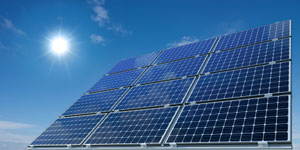Solar Panels Generate Electricity and Power Devices
Download Audio VersionSolar panels are devices that transform sunlight into energy for heating, cooking, washing, and other uses. As long as there is a sufficient amount of light, these devices can generate electricity and power for household and commercial appliances.
Installing Photovoltaics
The decision to install PVs depends on several factors, including location, unobstructed roof space, direction and angle of the roof, and others. Homeowners should consider how much electricity their household needs and whether installing solar panels will lead to significant savings. It is important to make sure that the roof is unobstructed and check whether it is steep. Solar panels cannot be installed on clay tile and slate roofs. Installing photovoltaics on concrete, flat, and shake roofs is possible but more difficult to do.
Types of Systems
Photovoltaics are one type of device that is roof-mounted and made from semi-conducting materials. There are different varieties, including monocrystalline silicon cells, crystalline silicon, polycrystalline, thin film, string ribbon, and others. String ribbon cells are made from silicon and are affordable. The downside is that they are less efficient than other photovoltaics. Thin-film technologies are suitable for areas where space is not an issue. They come in different varieties, including organic, copper, and amorphous silicon cells. Thin-film cells perform well at high temperatures and have an energy efficiency of up to 13 percent. There are two problems with thin-film technologies. One is that they have a shorter useful life than other photovoltaics. The other problem is that they require a lot of space. There are also solar slates and tiles that are used instead of panels and conventional roof tiles.

Weather Conditions
Many homeowners are interested in whether photovoltaics generate electricity when it snows and rains. Solar panels are designed in such a way as to handle high temperatures and tough weather. They are not 100-percent effective in rainy and cloudy days, but their effectiveness also depends on the location of the cells. They will produce 70 percent less in cloudy days, but photovoltaics generate electricity regardless of weather conditions. Snowstorms and blizzards are an exception to the rule.
Uses of Solar Panels
Photovoltaics have many applications and generate power for batteries, pumps, swimming pools, household appliances, and others. Many families use solar power for heating as to cut their electricity bill. Sunlight can be used instead of electric and gas heaters. Photovoltaics also generate electricity for tool sheds, cabins, campers, houses, and other residential units. DC power is transformed into AC power with the help of inverters and powers household devices. Sun-powered appliances can be used for cooking as well. A solar oven is a great choice for a sunny day. You can even make one by yourself – you will need duct tape, a cooking bag, foil, pan, box, and insulation.
Benefits Associated with Photovoltaics
Homeowners enjoy a variety of benefits, and one is that photovoltaics are an eco-friendly alternative to power plants that use fossil fuels. Fossil fuels represent a mix of toxins and plant matter and are extracted, processed, and then released into the environment. This contributes to environmental pollution, acid rain, smog, climate change, and global warming. Moreover, the use of fossil fuels generates radioactive waste that is dangerous for human health and the environment and has to be stored for thousands of years (high-level waste). Solar cells cause minimum environmental pollution through their manufacturing, storage, and transportation. Thus they are a cleaner, eco-friendly alternative to traditional power sources, which are non-renewable. Other benefits associated with solar panels are that they are easy to maintain, silent, and help homeowners and businesses to save money in the long run. While installation costs are the major downside, the national authorities in many countries offer financial incentives and rebates. Besides, photovoltaics are easy to install, and installation can be done within 1 day. You should use the services of accredited solar installer, however. Finally, there are photovoltaic systems that are not connected to the grid. This is a good solution for households in remote areas.
Related Articles
Solar-powered Watches, iPhones, and Other Devices
There is a wide array of solar-powered devices, from mirrors and fans to pumps, fridges, and chimneys. Manufacturers also offer high-tech gadgets such as iPhones and watches. Many companies are looking for new ways to create wearable, smarter, and lightweight technologies with functional designs....
Solar Power Creates Jobs and Sustainable Communities
Solar power is used to produce electricity through a variety of innovative and conventional technologies such as photovoltaics, cells, heating devices, and others. Solar towers and systems and also used. Energy for Households and Residential UnitsThere are different ways to maximize energy...


